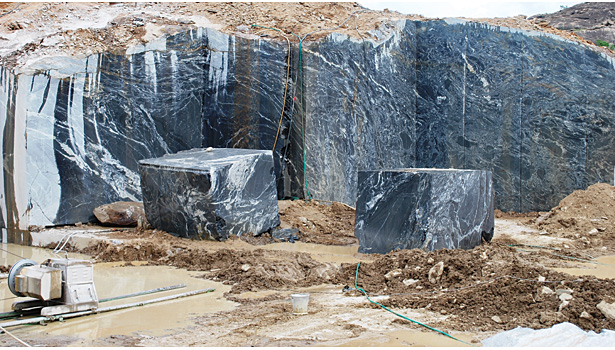Granite Quarries in South Africa Wonders: Exploring the Quarry Landscape
Unearthing the Rich History and Sustainable Practices of Granite Quarrying
As we base on the precipice of uncovering the detailed tapestry of granite quarrying, a trip via time reveals not simply the physical act of drawing out stone yet likewise the social and historic value woven into the really fabric of this technique. From the ancient origins that laid the structure for modern quarrying techniques to the sustainable practices that are shaping the future of this industry, each chisel mark on granite surface areas narrates waiting to be discovered (granite quarries in south africa). The heritage of granite quarrying stretches much beyond simple removal; it is a testament to human ingenuity, resilience, and the enduring attraction of this stunning stone
Ancient Origins of Granite Quarrying
Dating back to ancient civilizations, the practice of quarrying granite has been an important component of human background and architectural development. The earliest evidence of granite quarrying dates back to old Egypt, where enormous pyramids and complex sculptures were crafted from this durable rock. The Egyptians utilized primitive devices to extract granite blocks from quarries, showcasing the significance of this product in their monumental constructions.
Moving onward in background, the Greeks additionally made substantial payments to the quarrying of granite. The Greeks used granite in numerous building marvels, such as temples and statues, showing their skill in shaping and sculpting this hardy rock. The Romans even more fine-tuned the techniques of quarrying granite, utilizing sophisticated tools like knives and hammers to essence and form granite for their legendary structures.
Through the centuries, the technique of quarrying granite has actually progressed, with contemporary innovations boosting effectiveness while maintaining the timeless charm of this natural stone - granite quarries in south africa. From old people to modern contractors, the heritage of granite quarrying proceeds to shape our globe
Advancement of Quarrying Techniques
The advancement of quarrying methods has been noted by a continuous progression in the direction of higher effectiveness and accuracy in extracting granite. From the rudimentary techniques utilized by our forefathers to the innovative innovations used in contemporary quarrying operations, the market has actually undertaken substantial improvements. Early quarrying methods entailed manual work with fundamental tools such as chisels, hammers, and wedges to extract granite blocks from the earth. As worlds advanced, techniques like fire-setting and primitive nitroglycerins were presented to facilitate the removal process.
Improvements in computer-controlled equipment and 3D modeling have maximized quarrying operations, leading to very little environmental impact and improved sustainability practices. As the demand for granite continues to climb, the advancement of quarrying strategies stays integral to conference sector needs efficiently right here and sustainably.
Cultural Value of Granite
Granite holds a profound cultural relevance across numerous people due to its enduring visibility in building masterpieces and respected monoliths. From the impressive pyramids of Egypt to the complex makings of the Angkor Wat temple in Cambodia, granite has been a product of option for expressing grandeur and durability in cultural heritage. In ancient Rome, granite columns decorated temples and public buildings, signifying strength and durability. The cultural relevance of granite extends beyond its physical attributes; it embodies strength, security, and timelessness, making it a symbol of enduring legacies and customs.

Lasting Practices in Quarrying
Among the rich history of granite quarrying and its cultural significance exists an expanding focus on lasting methods within the industry. As ecological awareness and issues concerning resource exhaustion have actually heightened globally, the quarrying market has increasingly welcomed sustainable methods to reduce its influence on the setting and surrounding areas.

Additionally, improvement and rehab of quarry sites post-extraction are important to sustainable methods. By restoring quarried areas to a natural or browse around here advantageous state, such as creating wild animals environments or leisure areas, quarriers can balance out the environmental impact of their procedures and add positively to the local ecosystem.
Heritage of Granite Quarrying
With a historic backdrop steeped in workmanship and commercial development, what enduring influence has granite quarrying left on the landscape of modern-day society? The heritage of granite quarrying transcends simple extraction methods; it has shaped building wonders, urban landscapes, and social heritage worldwide. The durable nature of granite has actually made it a recommended option for monuments, structures, and facilities, standing as a testament to the ability and virtuosity of quarry workers throughout generations.
Additionally, the economic impact of granite quarrying can not be neglected. The sector remains to offer employment possibility and drive local economic situations in regions where granite removal prevails. It has actually likewise stimulated technological advancements in quarrying strategies and equipment, bring about much more reliable and sustainable techniques.
In regards to sustainability, the legacy of granite quarrying includes initiatives to minimize environmental effects via reclamation projects and accountable source monitoring. By balancing economic rate of interests with ecological stewardship, the sector strives to guarantee that future generations can proceed to take advantage of this long-lasting natural deposit.
Conclusion
